Astrologer in US : #Astrologer in USA : #Astrologer in India : #Astrologer in Chennai : # Best Astrologer in :#Pancha Pakshi Astrology : #Astrologer in Malaysia : #Astrologer in Sri Lanka : #Astrologer in Dubai : #Astrologer in UAE
|
02 December 2018
With the rising number of people being diagnosed with diabetes, it is no wonder scientists are looking for newer methods to treat the disease. One of the cornerstones of controlling one’s blood sugar is regular and holistic exercise. And yoga is one such ancient measure to effectively control your blood sugar levels.. But before we discuss in detail about various yoga poses to keep diabetes under control, here’s what you should know about the significance of exercise for diabetics.
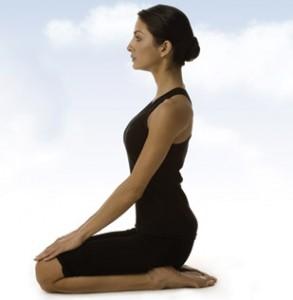
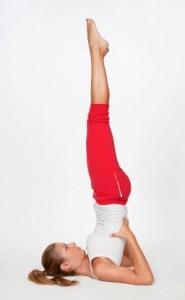


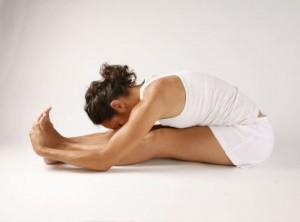
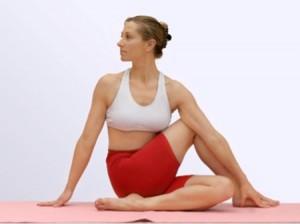
Diabetes is caused when your blood cells do not respond to insulin produced in the body. When you follow a regular exercise regimen, your body starts responding to insulin, helping to reduce your blood glucose. Exercise also helps improve blood circulation in your body, particularly in the arms and legs, where diabetic patients most commonly encounter problems. It is an excellent way to fight stress, both at the body and mind level, which in turn helps keep one’s glucose levels down. Here are top 8 reasons why you should start exercising today.
Regular yoga practice can help reduce the level of sugar in the blood, along with lowering blood pressure, keeping your weight in check, reducing the severity of the symptoms and slowing the rate of progression of the disease. It also lessens the possibility of further complications.
Stress is one of the major reasons for diabetes. It increases the secretion of glucagon (a hormone responsible for increasing blood glucose levels) in the body. The consistent practice of yoga aasanas, pranayam and a few minutes of meditation can help reduce stress in the mind and protect the body from its adverse effects. This, in turn, reducing the amount of glucagon and improve the action of insulin.
The practice of yoga is also a proven to lose weight and slow the process of fat accumulation. Surya namaskar and kapal bhati pranayama are some of the most effective yoga poses that aid weight loss. Since obesity is a major contributing factor for diabetes, doing yoga to keep your weight in check is the key. Here’s how to practise Surya Namaskar the right way.
#1 Pranayam
Breathing in deeply and breathing out helps oxygenate your blood, and improves circulation. It also calms the mind and gives your rattled nerves some much needed rest. Here are few more health benefits of pranayama you should be aware of.
Steps to do this pose:
· Sit on a yoga mat on the floor. Fold your legs in either padmasana or sit cross legged.
· Now straighten your back, keep your chin parallel to the floor, place your hands on your knees with your palms facing upwards and close your eyes.
· Breath in deep and hold your breath for five counts. Exhale slowly. Repeat this process at least ten times.
· Once you are done, rub your palms together till they are warm, and place them on your eyes. Now slowly open them and smile.
#2 Setubandhasana
This pose not only helps keep one’s blood pressure in control it also helps to relax the mind, improves digestion, relieves the symptoms of menopause in women and stretches the neck and spine.
Steps to do this pose:
· Lie flat on your yoga mat, with your feet flat on the floor.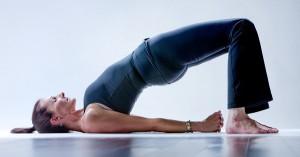
· Now exhale and push up, and off the floor with your feet.
· Raise your body up such that your neck and head are flat on the mat and the rest of your body is in the air.
· You can use your hands to push down for added support.
· If you are flexible you can even clasp your fingers just below your raised back for that added stretch.
· The key here is to not overexert or hurt yourself while doing this pose.
Tip: Avoid doing this pose if you have a neck or back injury.
#3 Balasana
Known quite aptly as the child’s pose this is a great stress buster. It gently stretches the hips, thighs and ankles, calms the mind and helps relieve stress and fatigue. It is also a great remedy for that lower back pain you might have from long hours of sitting.
Steps to do the pose: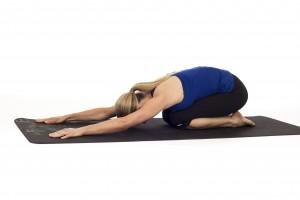
· Sit on the floor with your weight on your knees. Now flatten your feet onto the floor and sit on your heels.
· Spread your thighs apart a little. Exhale and bend forward from your waist.
· Let your stomach rest on your thighs and extend your back. Now stretch out your arms in front of you to elongate the back.
· You can also rest your forehead on the floor. This may require flexibility, so don’t push your body beyond its limit. You will get better with time.
· This is a resting pose so you should ideally breath at a normal pace. You can stay in this pose for as long as three minutes or as little as five counts
Tip: If you are pregnant, have a knee injury or have diarrhoea do not do this pose.
#4 Vajrasana
This is a simple pose that is great to relax the mind, improve digestion and massages thekanda. According to Ayurvedic principles, kanda is a spot about 12 inches above the anus that is the point of convergence for over 72,000 nerves.
Steps to do this pose:
· All you need to do is place a yoga mat on the floor.
· Kneel on the mat, and let the top surface of your feet touch the mat, such that your heels are pointing upwards.
· Now gently place your buttocks on your heels. It is important to note that your heels are on either side of your anus.
· Now place both your palms on your knees, facing downwards. Close your eye and breath in deeply at a steady rate.
#5 Sarvangasana
This pose is essentially known for its ability to regulate the working of the thyroid glands.. These glands are responsible for the proper functioning of the entire body including the digestive, nervous, reproductive system, regulating metabolism and respiratory system. Apart from that, it nourishes the spine with a good supply of blood and oxygen, helping you beat nervous system disorders, and improving your all round health. Read more about how sarvangasana works
Steps to do this pose:
· Lie on a yoga mat with your legs extending outwards.
· Now slowly raise your legs either by first folding them at the knees or by lifting them straight.
· Place your palms along your back and hips to support it, and raise your body while pointing your toes to the ceiling.
· All your weight should be on your shoulders. Make sure you breathe slowly and lock your chin into your chest.
· Your elbows should be touching the floor and your back should be supported. Hold this pose for as long as you are comfortable.
· To return to the lying position, slowly lower your body. Do not fall back to the lying position.
Tips: Do not do this pose if you suffer from any neck or spinal injuries. If you do have high blood pressure perform this exercise only under supervision.
#6 Halasana
This pose is great for those who sit for long hours and tend to have bad posture. It stimulates the thyroid glands, parathyroid glands, lungs and abdominal organs, therefore helping the blood rush to your head and face, improves digestion and keeps the hormonal levels in check. Read more about how halasana can beat bad posture and backache.
Step to do this pose:
· Lie flat on the floor with your feet flat stretched out. Place your arms by your side and bend your knees so that your feet are flat on the floor.
· Now, slowly raise your legs from the hips. Place your hands on your hips as you raise them and use your hands as support.
· Now slowly bend your legs at the hips and try to touch the floor behind your head with your toes and straighten your hands so they are flat on the floor.
· Breath out while going up. To return to the lying position gently roll your back onto the floor, breath in while you come down. Do not drop down suddenly.
Tip to keep in mind: If you suffer from liver or spleen disorders, hypertension, have diarrhoea are menstruating or have suffered a neck injury, avoid doing this pose.
#7 Dhanurasana
This pose is great to strengthen your back and spine, stimulate the reproductive organs, beats stress and fatigue, relieves menstrual pain and constipation.
Steps to do this pose:
· Lie on your stomach with your feet hip-width apart and your arms by the side of your body.
· Fold your knees and hold your ankles. Breathing in, lift your chest off the ground and pull your legs up and back.
· Look straight ahead with a smile on your face. Keep the pose stable while paying attention to your breath.
· Continue to take long deep breaths as you relax in this pose. But don’t get carried away!
· Do not overdo the stretch. After 15 -20 seconds, as you exhale, gently bring your legs and chest to the ground. Release the ankles and relax.
Tip: Do not practice this pose if you have high or low blood pressure, hernia, neck injury, pain in the lower back, headache, migraine or a recent abdominal surgery or if you are pregnant.
#8 Chakrasana
This pose is great to stretch the spine and relax the muscles of the back. Moreover it helps relax the mind and make it stress free.
Steps to do this pose:
· To do this pose start by lying on your back with your arms horizontally stretched out in line you’re your shoulders.
· Bend your knees and bring your feet close to your hips. The soles of your feet should be fully on the ground.
· Swing your knees to the left until the left knee touches the ground (the right knee and thigh should rest on the left knee and thigh).
· Simultaneously, turn your head to the right and look at your right palm. Make sure your shoulder blades touch the ground.
· While the body is twisted, there is a tendency for one of your shoulder blades to lift off the ground. You must work against this tendency for the stretch to be effective.
· Feel the stretch in the thighs, groin, arms, neck, stomach and back as you hold the pose. With each exhalation, relax deeper into the pose.
· After a few minutes, you may slowly turn your head back to the centre, and straighten the torso and legs. Mirror the pose on the other side.
Tip: Avoid this posture if you have any spinal injuries.
#9 Paschimotasana
This is a forward bending pose that helps the blood to flow to the face. Apart from that, it helps the stomach function better, strengthens the thigh muscles and relaxes the back and arms.
Steps to do this pose:
· Sit with your legs stretched out on the floor. Next hold the big toe of your feet with your index finger and thumb.
· Now, exhale and slowly bend forward and try to touch your forehead to your knees.
· The key is that your elbows should touch the floor.Do not breath in.
· Stay in this position for five counts and inhale as you rise back to the sitting position.
Tips to keep in mind: If you have any type of back pain or complaints with your spine, do not do this pose. Moreover, be easy on yourself, you might not be able to touch your knees with your forehead. Know that if you keep at it you will regain your flexibility and be able to do the pose properly.
#10 Ardha Matsyendrasana: This asana is specifically designed to increase the capacity of your lungs so it can inhale and hold more oxygen. It also loosens up the spine and relieves backaches and discomfort in the back.
Steps to do this pose:
· Sit up with your legs stretched out straight in front of you, keeping your feet together and your spine erect.
· Bend your left leg and place the heal of your left foot beside your right hip (optionally, you can keep your left leg straight).
· Now, Take the right leg over your left knee and place your left hand on your right knee and your right hand behind you.
· Twist at the waist, shoulders and neck in this sequence to the right and look over the right shoulder. Hold and continue with gentle long breaths in and out.
· To come back to the starting position, continue breathing out, release the right hand first (the hand behind you), release the waist, then chest,lastly the neck and sit up relaxed yet straight.
· Repeat to the other side. Breathing out, come back to the front and relax.
Tip: If you have a back injury, do this pose only in the presence of a certified trainer.
Apart from this, a few minutes of regular meditation practice also acts as an excellent stress-buster for the mind and body. Interestingly, while stress is the major cause of diabetes, the condition in turn results in patients getting highly stressed about it, which further aggravates the problem. It has also been observed that most diabetics lose self-confidence and end up brooding over their condition. This is where meditation can help – restoring their confidence levels so that they gain the strength to fight the condition and live well. Craving for sweets is a common occurrence in diabetes. Regular practice of meditation can help drop such cravings to a large extent. If you’re a beginner, refer to this 10 step meditation guide.
Astrologer Vighnesh India: +91 9445548316 / 9382633377 USA: +1 (425) 358-6565 / +1 (716) 777-3857 Wat'sapp..Consultation by web appointment www.astrovighnesh.com
Guide: How To Sleep Well As You Age!
Just as our bodies change as we age, so do our sleeping patterns. You may find yourself becoming sleepy earlier, waking up earlier or sleeping less deeply. While these sleeping habits are to be expected, others such as disturbed sleep, waking up tired every day and other symptoms of insomnia are not a normal part of the aging process. Nevertheless, with these tips you can overcome any age-related sleep problem and get a good night's rest in the process.
Why getting enough sleep as you age is important
A good night's rest among older adults is important as it helps improve concentration and memory formation. It also enables the body to repair any cell damage that has occurred throughout the day, refreshing your immune system and thus preventing disease. Not getting enough or good quality sleep at night could result in depression, attention and memory problems as well as excessive daytime sleepiness. What's more, insufficient sleep can lead to serious health problems including an increased risk of cardiovascular disease, diabetes, weight problems and also breast cancer in women.
How many hours of sleep you need
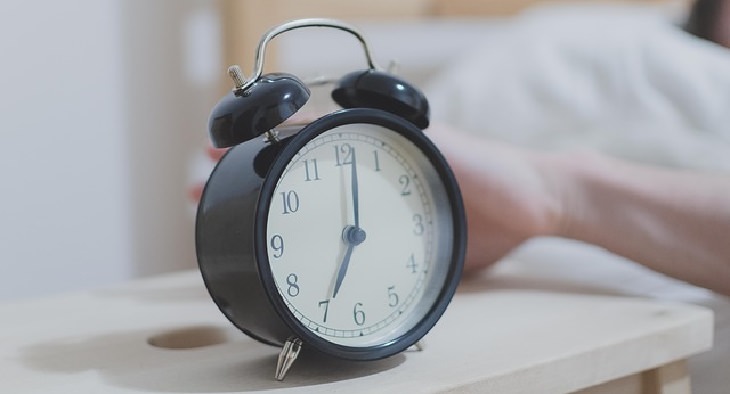
Sleep requirements vary from person to person, but most adults require anywhere between 7.5 to 9 hours of sleep per night. How you feel in the morning, however, is more important than the amount of hours you get at night. If you're not getting enough sleep, you'll ly wake up with a feeling of not being rested, or you may feel tired throughout the day.
The following tips will help you get a better idea of how to improve your sleep at night:
The following tips will help you get a better idea of how to improve your sleep at night:
Tip 1: How sleep changes as you age

As you age, your body produces lower levels of growth hormone, decreasing your need for deep sleep. When this happens, your body is producing less melatonin, meaning that you'll ly experience more fragmented sleep causing you to wake up more often during the night. Here's what you should do:
• Go to sleep earlier in the evening and wake up earlier in the morning;
• Take more time in bed at night to get the hours of sleep you need, or take a nap during the day.
• Take more time in bed at night to get the hours of sleep you need, or take a nap during the day.
While sleep problems occur occasionally, if you experience the following symptoms regularly, you may be dealing with a sleep disorder:
• Have trouble falling asleep although you feel tired.
• Have trouble getting back to sleep after you have awakened.
• Don't feel refreshed after a night's sleep.
• Feel irritable or sleepy throughout the day.
• Have difficulty staying awake when sitting still, watching television or driving.
• Have difficulty concentrating throughout the day.
• Rely on sleeping pills or alcohol to help you fall asleep.
• Have trouble controlling your emotions.
• Have trouble getting back to sleep after you have awakened.
• Don't feel refreshed after a night's sleep.
• Feel irritable or sleepy throughout the day.
• Have difficulty staying awake when sitting still, watching television or driving.
• Have difficulty concentrating throughout the day.
• Rely on sleeping pills or alcohol to help you fall asleep.
• Have trouble controlling your emotions.
Tip 2: Identifying what is causing your sleep problems

Under most circumstances, insomnia is caused by underlying but very treatable causes. So, identifying all the possible causes, will enable you to treat your symptoms accordingly. Look out for the following signs:
• Are you feeling stressed?
• Are you depressed or feeling emotionally flat or hopeless?
• Do you suffer from chronic anxiety or worry?
• Have you recently gone through a traumatic experience?
• Are you taking any medications that may be affecting your sleep?
• Do you have a health problem which is interfering with your sleep?
• Are you depressed or feeling emotionally flat or hopeless?
• Do you suffer from chronic anxiety or worry?
• Have you recently gone through a traumatic experience?
• Are you taking any medications that may be affecting your sleep?
• Do you have a health problem which is interfering with your sleep?
While emotional and psychological effects may affect your sleep, other common problems include:
• Poor sleep habits and sleep environment: Irregular sleep hours, consuming alcohol before bed and falling asleep with the television on may all have an impact on your sleep. Make sure that your room is comfortable, dark and quiet too.
• Pain or medical conditions: The need to urinate frequently, feeling in pain, arthritis, asthma, diabetes, osteoporosis, nighttime heartburn and Alzheimer's can all interfere with your sleep and should therefore be discussed with your doctor.
• Menopause and post menopause: Hot flashes and night time sweats that arise from menopause can interrupt your sleep. Post menopause may also contribute to interrupted sleep. Try improving your daytime habits and pay particular attention to your diet and exercise.
• Medications: The combination of drugs as well as their side effects can impair your sleep. If your medication is causing you sleeping problems, speak to your doctor.
• Lack of exercise: A sedentary lifestyle can cause you to feel sleepy. Engage in regular aerobic exercises to counteract the problem.
• Lack of social engagement: Engaging in social activities can keep your activity up and prepare your body for a good night's rest. Join a seniors group or take an adult educational class if you have more time on your hand.
• Lack of sunlight: Sunlight can help regulate your melatonin and sleep-wake cycles. Make it a point to get at least two hours of sunlight each day.
• Pain or medical conditions: The need to urinate frequently, feeling in pain, arthritis, asthma, diabetes, osteoporosis, nighttime heartburn and Alzheimer's can all interfere with your sleep and should therefore be discussed with your doctor.
• Menopause and post menopause: Hot flashes and night time sweats that arise from menopause can interrupt your sleep. Post menopause may also contribute to interrupted sleep. Try improving your daytime habits and pay particular attention to your diet and exercise.
• Medications: The combination of drugs as well as their side effects can impair your sleep. If your medication is causing you sleeping problems, speak to your doctor.
• Lack of exercise: A sedentary lifestyle can cause you to feel sleepy. Engage in regular aerobic exercises to counteract the problem.
• Lack of social engagement: Engaging in social activities can keep your activity up and prepare your body for a good night's rest. Join a seniors group or take an adult educational class if you have more time on your hand.
• Lack of sunlight: Sunlight can help regulate your melatonin and sleep-wake cycles. Make it a point to get at least two hours of sunlight each day.
Tip 3: Improve your sleep habits
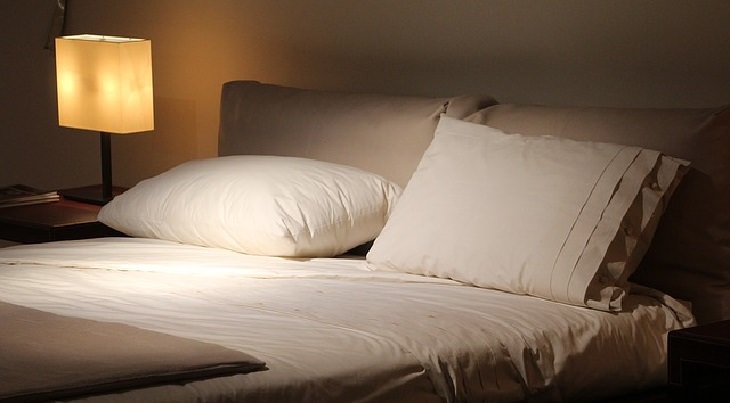
Addressing emotional issues will help improve your sleep environment. Try experimenting with the following to determine specific changes that work best to improve your sleep:
• Don't read from a backlit device at night: Portable electronic devices such as iPads, should be avoided before bedtime. At most, opt for an eReader that is not backlit and one that does not require additional lighting.
• Your bedroom should be quiet, dark and cool and your bed, comfortable: Noise, light and heat can also cause health problems. A sleep mask can be used to block any light..
• Limit your bedroom space only for sleep and intimacy: Your bedroom should not be the room you work in, watch tv in, or use a computer. Your brain should think of your bedroom for sleep and romance only.
• Clocks should be out of view: Just as light can disrupt your sleep, anxiously watching the minutes tick by is bound to cause you sleep problems at night.
• Maintain a consistent routine and sleep schedule: Ideally go to bed and wake up at the same time every day.
• Block out snoring: If it's what's keeping you up.. Try earplugs, a white noise machine or sleep in separate bedrooms.
• Develop a soothing bedtime ritual: Take a bath, play music or practice relaxation techniques meditation and deep breathing to help you wind down.
• Take a nap if you feel the need: Naps as short as five minutes may be enough to improve your alertness and certain memory processes. Most people get a good enough nap from 15 to 45 minutes. Anything longer than that can cause you to feel groggy. Napping too late in the day may also disrupt your nighttime sleep.
• Your bedroom should be quiet, dark and cool and your bed, comfortable: Noise, light and heat can also cause health problems. A sleep mask can be used to block any light..
• Limit your bedroom space only for sleep and intimacy: Your bedroom should not be the room you work in, watch tv in, or use a computer. Your brain should think of your bedroom for sleep and romance only.
• Clocks should be out of view: Just as light can disrupt your sleep, anxiously watching the minutes tick by is bound to cause you sleep problems at night.
• Maintain a consistent routine and sleep schedule: Ideally go to bed and wake up at the same time every day.
• Block out snoring: If it's what's keeping you up.. Try earplugs, a white noise machine or sleep in separate bedrooms.
• Develop a soothing bedtime ritual: Take a bath, play music or practice relaxation techniques meditation and deep breathing to help you wind down.
• Take a nap if you feel the need: Naps as short as five minutes may be enough to improve your alertness and certain memory processes. Most people get a good enough nap from 15 to 45 minutes. Anything longer than that can cause you to feel groggy. Napping too late in the day may also disrupt your nighttime sleep.
Tip 4: Use diet and exercise to improve your sleep

Diet and exercise may have a big impact on how well you sleep at night. Bear in mind the following tips:
• Limit caffeine late in the day.
• While it may seem alcohol makes you sleep, it will actually disrupt sleep. So, avoid any alcohol so late in the day.
• Have a light snack, including crackers, cereal and milk, yogurt or warm milk.
• Avoid big meals and spicy foods before bedtime, particularly if they cause you indigestion or discomfort.
• Limit the amount of liquid you drink before bedtime.
• Exercise regularly to overcome sleep problems.
• Aerobic activity is especially useful as this form of exercise releases chemicals in your body, promoting a restful sleep. Furthermore, according to one study, aerobic exercise resulted in the most dramatic improvement in quality of sleep, including sleep duration for middle-aged and older adults who have been diagnosed with insomnia.
• While it may seem alcohol makes you sleep, it will actually disrupt sleep. So, avoid any alcohol so late in the day.
• Have a light snack, including crackers, cereal and milk, yogurt or warm milk.
• Avoid big meals and spicy foods before bedtime, particularly if they cause you indigestion or discomfort.
• Limit the amount of liquid you drink before bedtime.
• Exercise regularly to overcome sleep problems.
• Aerobic activity is especially useful as this form of exercise releases chemicals in your body, promoting a restful sleep. Furthermore, according to one study, aerobic exercise resulted in the most dramatic improvement in quality of sleep, including sleep duration for middle-aged and older adults who have been diagnosed with insomnia.
• Swimming may also help you sleep better at night. Swimming laps is a gentle and effective way to build up fitness and is great for joints and weak muscles.
• Cycling or running is another form of beneficial exercise to help you sleep better at night. Engage in these activities outdoors or on a stationary bike or treadmill.
• Cycling or running is another form of beneficial exercise to help you sleep better at night. Engage in these activities outdoors or on a stationary bike or treadmill.
Tip 5: Reduce mental stress

Stress and anxiety that has built up throughout the day may interfere with your sleep at night. Learn how to let go of your thoughts and worries with these helpful tips:
• Keep a journal and write down all of your worries before you go to sleep.
• Check off tasks completed on your to-do lists, listing your goals for tomorrow then let the thoughts go.
• Listen to some calming music.
• Read a book that makes you feel relaxed..
• Ask your partner to give you a massage.
• Talk face to face with a friend about what is troubling you.
• Check off tasks completed on your to-do lists, listing your goals for tomorrow then let the thoughts go.
• Listen to some calming music.
• Read a book that makes you feel relaxed..
• Ask your partner to give you a massage.
• Talk face to face with a friend about what is troubling you.
Remember also that while it is normal to wake briefly during the night, if you're having trouble falling asleep bear in mind the following tips:
• Don't stress: Stressing over the fact that you can't get back to sleep will make your body stay awake. Focus on the feelings and sensations in your body instead.
• Relax: Relaxation should be your goal, rather than sleep. You can also try methods such as deep breathing or meditation without having to get out of bed.
• Do a non-stimulating activity: If after 15 minutes you still cannot get to sleep, get out of bed and do something non-stimulating, such as reading a book.
• Postpone worrying: If you wake up feeling anxious, make a brief note of it on a piece of paper and postpone your worrying thoughts to the next day.
• Relax: Relaxation should be your goal, rather than sleep. You can also try methods such as deep breathing or meditation without having to get out of bed.
• Do a non-stimulating activity: If after 15 minutes you still cannot get to sleep, get out of bed and do something non-stimulating, such as reading a book.
• Postpone worrying: If you wake up feeling anxious, make a brief note of it on a piece of paper and postpone your worrying thoughts to the next day.
Tip 6: Talk to your doctor about your sleep problems

If the aforementioned techniques do not help with your sleeping problems, you ought to talk to your doctor. To help them better understand your situation, take a sleep diary with you - listing when you consume alcohol, caffeine and nicotine, keeping track of your medications, exercise, lifestyle changes and recent stresses. Your doctor may then refer you to a sleep specialist or cognitive behavioral therapist for further treatment.
Astrologer Vighnesh India: +91 9445548316 / 9382633377 USA: +1 (425) 358-6565 / +1 (716) 777-3857 Wat'sapp..Consultation by web appointment www.astrovighnesh.com
Astrologer in US : #Astrologer in USA : #Astrologer in India : #Astrologer in Chennai : # Best Astrologer in :#Pancha Pakshi Astrology : #Astrologer in Malaysia : #Astrologer in Sri Lanka : #Astrologer in Dubai : #Astrologer in UAE
|










